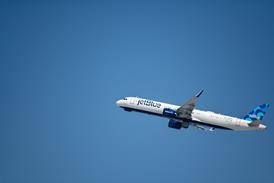Aircraft makers, airline associations and pilot groups alike are criticising the US Federal Aviation Administration's proposed rule to require aircraft to carry a specific type of automatic dependent surveillance - broadcast (ADS-B) surveillance system by 2020 - an upgrade the agency calls the backbone of its next generation air transportation system (NextGen). The comment period for the proposed rule, issued in October, closed earlier this month.
Few were more outspoken than the Airline Transport Association of America (ATA). "ATA strongly supports ADS-B technology and the development and deployment at the earliest possible date of the NextGen system," writes ATA's Basil Barimo, vice-president of operations and safety in his comments to the FAA. "However, our principled support for ADS-B and NextGen must give way in this instance to our concerns that the NPRM [notice of proposed rulemaking] is poorly conceived and, as a result, will not serve the public interest in a modern ATC system that increases airspace capacity and reduces aviation's impact on the environment."
The proposed rule calls for operators to equip with a 1090MHz extended squitter (1090ES) continuously broadcasting system for flights above 24,000ft (FL240/7,320m), and for cruise altitudes below FL240, to either use a 1090ES or a universal access transceiver (UAT), a lower-cost device with additional bandwidth that would primarily allow general aviation aircraft to bring weather and airspace information into the cockpit.
The 2020 rule requires that either device broadcast the aircraft's GPS position (called ADS-B "out") to the ground, allowing the FAA to reduce its reliance on secondary surveillance radars - but not taking full advantage of ADS-B's potential, which includes allowing aircraft to perform self-separation by bringing into the cockpit the precise GPS location of all nearby aircraft (ADS-B "in").
As such, Barimo says, the rule "will not produce a benefit to regulated parties [and, by extension, to the public] but will, on the other hand, commit the aviation industry to enormous costs". ATA estimates the retrofit cost of equipage to be twice what the FAA is predicting - an average of about $160,000 per aircraft. The estimate would also indicate that the FAA's total estimated price tag of $7.5 billion for complete US equipage is far too low.
Like other stakeholders, the ATA is asking the FAA to rethink the proposal and issue a supplemental rulemaking that would include a two-phase implementation of ADS-B, with near-term studies to be performed by a subset of the airline fleet equipped with 1090ES transponders to prove out the benefits of the technology. A second phase would determine the performance standards for ADS-B "out" and lead the way to plans for ADS-B "in".
The Air Line Pilots Association agrees that the schedule is "too long" and that ADS-B "in", a technology that can help prevent runway incursions, should be included in the rule. "It is imperative that the FAA include a requirement for ADS-B In and a timeline for implementation as part of the ADS-B rule," says ALPA's Brian Townsend.
Airbus and Boeing also weighed in on the proposal, with the former criticising the FAA for not "setting clear and phased implementation schedules" and not laying out a "unique concurrent programme of system demonstrations, in-service evaluations" and Boeing chiding the agency for not allowing operators who already have 1090ES systems to participate in early trials of the system, as is being proposed in Australia, Canada and Europe.
Source: Flight International























